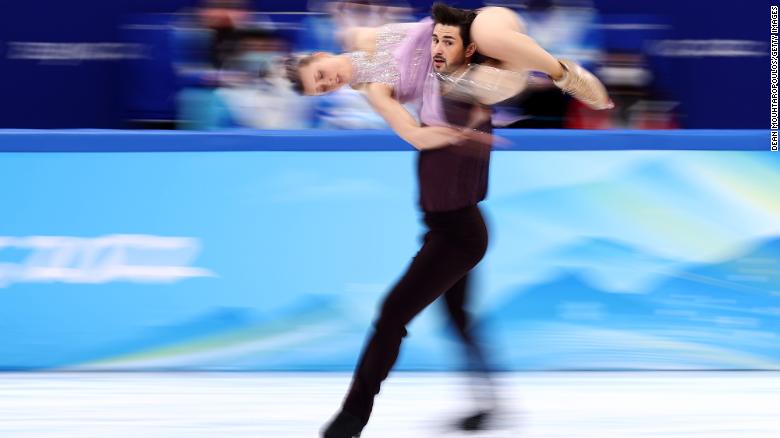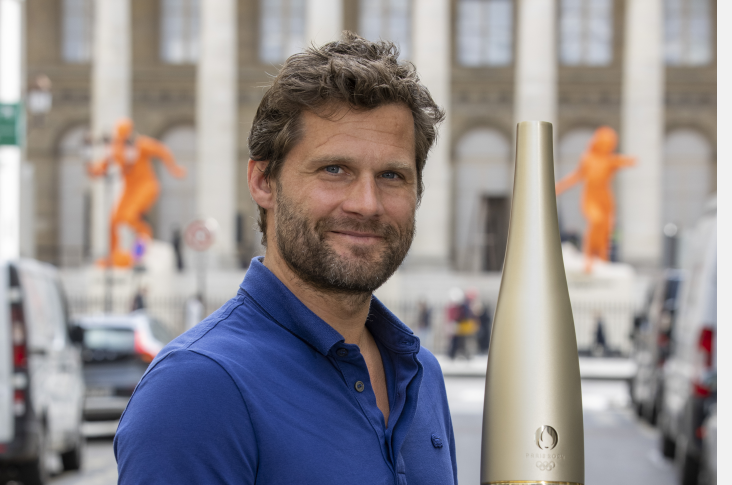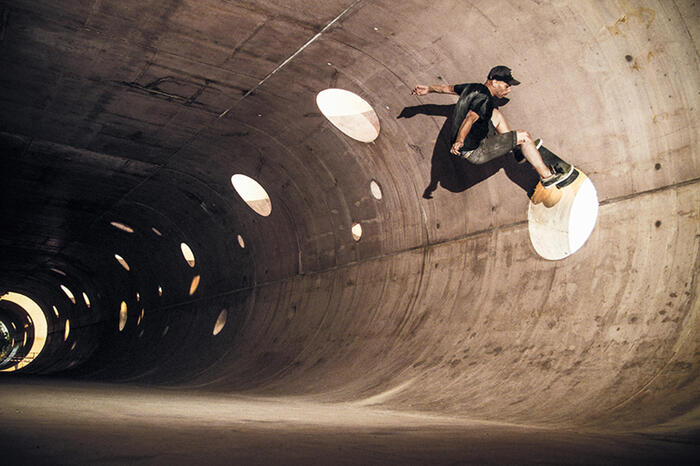Donovan Carrillo: I started skating because of a platonic love 1:01
(CNN) --
Top figure skaters spin at such incredible speeds -- up to six revolutions per second -- that they can make even onlookers feel a little dizzy.
Curious viewers of the Beijing Winter Olympics have their doubts about that.
"How do figure skaters keep from getting seasick?"
has been one of the top searches on Google for the last week.
How do these athletes perform those head-turning moves without falling over?
As skating events continue in Beijing this week, the women's free skating show airing this Thursday night on NBC and Peacock, we asked the experts to find out.
Russian figure skater Kamila Valieva receives clearance to compete at the Beijing Olympics
Do figure skaters get dizzy?
Not so much, because they have learned to minimize it.
Although they occasionally topple over on landing, figure skaters often spin in the air without losing their balance.
That's because they've conditioned their bodies and brains to override that queasy feeling, experts say.
advertising
American figure skater Mirai Nagasu, who won a bronze medal at the 2018 South Korean Winter Olympics, says she feels the rotations but has learned to focus her attention over the years.
"I think we have a learned ability against momentum hitting us while we're turning," he says.
US Olympic medalist Mirai Nagasu skates in New York's Bryant Park.
Kathleen Cullen, a professor of biomedical engineering at Johns Hopkins University, has a more scientific answer.
She studies the vestibular system, which is responsible for our sense of balance and movement, and says that turning without tripping from dizziness is an art that is perfected over time.
Early in their career, figure skaters and other athletes get dizzy when they spin, Cullen says.
But in the end, they train their brains to better interpret that feeling.
"There's a really deep fundamental thing that happens in the brain of people like dancers or figure skaters over a lot, a lot of practice. And that's basically a change in the way the brain processes information," says Cullen.
"When you spin, you're activating the semicircular canals, rotation sensors. They're filled with fluid and detect your rotation. But when you stop, the fluid has inertia and tends to keep moving. They actually have a false sense of motion."
Over years of training, figure skaters' brains have adapted and learned to ignore this mistake, he says.
"This is done over time, with each practice session, day by day, as the brain compares its expectations with what it actually receives from its sensory receptors."
Madison Hubbell and Zachary Donohue of Team USA skate on Day 10 of the Beijing 2022 Winter Olympics on February 14, 2022.
In short, Cullen says, most people feel like the world keeps spinning even after it stops spinning.
But Olympians, and figure skaters in particular, usually don't because their brains have been changed to suppress that feeling.
Athletes also learn to reduce their dizziness.
For example, concentrating on a fixed reference or stationary object minimizes dizziness and loss of balance.
"Ballet dancers often turn their heads during each turn to fix a visual reference. Similarly, at the end of the turn, athletes fix their eyes on a specific point on the wall to have a fixed reference," says Cullen.
Chinese figure skater Zhu Yi competes in the women's short program at the 2022 Winter Olympics.
The brain and inner ear are in constant communication with the body and with each other to achieve balance, says Brigid Dwyer, an assistant professor of neurology at Boston University School of Medicine.
"However, for most people, dizziness is only a potential problem during the most rapid and vigorous activities," says Dwyer.
"Surprisingly, when needed, we can trigger our brains to better handle dizzying tasks that we encounter over time."
These are other common doubts in Google about figure skating:
Why do some figure skaters wear tights over their skates?
Nagasu says that it all comes down to personal choice.
Some people wear tights over their skates if they're worn out, he says.
Others, like Courtney Hicks, gold medalist at the 2013 US International Figure Skating Classic, say wearing tights over skate boots helps lengthen the look of their legs.
But trends have changed in recent years, with many skaters choosing to wear tights that reveal their skate boots, says Nagasu.
American Courtney Hicks during a women's singles free skating event in Nagano, Japan, in November 2015.
What is the "kiss and cry" area?
After their program, the figure skaters await their scores in the "kiss and cry" area of the rink.
Here, viewers can see the athletes in one of their most tense moments.
Many figure skaters celebrate by kissing their coaches or bursting into tears of disappointment.
"It's supposed to be a play on words. Either you kiss each other because of how happy your score is, or it's so bad that you literally cry," Nagasu says.
Team Japan's Kaori Sakamoto reacts after learning her score during the Beijing 2022 Winter Olympics.
Why do some figure skaters wear gloves?
Skaters can easily fall off.
And hitting the ice at high speed is no fun at all.
"Ice can be hard when you fall, especially when you consider the height from which we fall and the momentum of our rotations," says Nagasu.
The gloves also keep skaters' hands warm during competition.
In a highly competitive sport where the slightest advantage can make all the difference, many athletes leave nothing to chance.
2022 Beijing Olympics Skating


/cloudfront-eu-central-1.images.arcpublishing.com/prisa/XRJ5S7YZJBH7DHXLTF7UYFTVBY.jpg)





